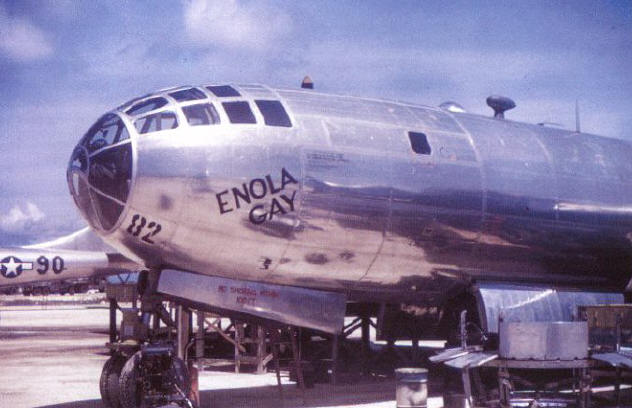|
|
| Boeing B-29/50
Superfortress |
The Boeing B-29 Superfortress was an aircraft
of superlatives. At the time it was built, It was the largest and most powerful airplane in
the world.
It was designed in 1940
as an eventual replacement for the B-17 and B-24 in the European
theater. The prototype made its first flight on September 21,
1942. It was soon decided that its long range would be more useful
in the Pacific Theater where vast expanses of oceans separated bases
from their targets. It was first used to attack the Japanese
homeland from bases in China. During the last two months of 1944,
B-29s began operating against Japan from the islands of Saipan, Guam
and Tinian.
The airplane was loaded with incendiaries and used to
firebomb Japan and mine its harbors, but it is best known as the
first (and only) airplane to ever drop an atomic bomb. The "Enola
Gay" dropped the first one on Hiroshima, Japan and "Boxcar" dropped
the second on Nagasaki.
When SAC began in 1946, it's primary bomber aircraft was the
B-29. Although there were many in storage at Davis Monthan
AFB, they were war-weary and antiqued. The plane was greatly
improved and soon new models, designated the B-50, began joining SAC
inventory.
|
 |
| The Enola Gay, a B-29 from the
509th
Composite Group was the first aircraft to drop an atomic bomb. . The 509th became the nucleus of the Strategic
Air Command. The Enola Gay later participated in Operation
Crossroads. It is now owned by the National Air and Space
Museum and is supposed to go on display at its new flight museum, at Dulles International Airport, near Washington, D.C. |
|
